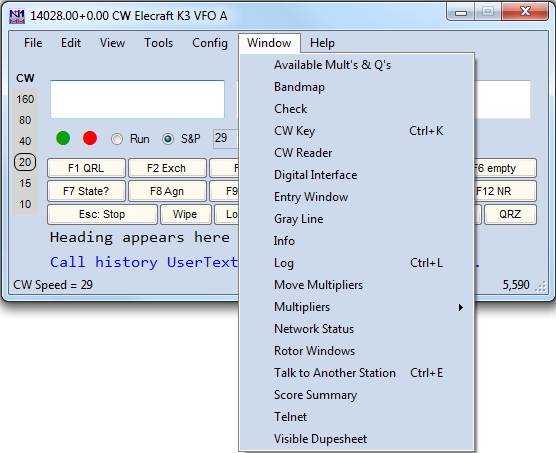

It is the preferred method of generating a RTTY signal, but comes with additional complexities.ĪFSK is much simpler, but there are things to watch out for.

This interface can be purchased, or simply made from a switching transistor (2N2222 or 2N3904) and some other parts. With FSK, you need an interface between your computer and the radio to generate an on-off signal to tell the radio to generate a mark or shift tone. Further details about the isolation transformer can be found as part of AA5AU’s Getting Started in RTTY.įSK stands for Frequency Shift Keying, whereas AFSK is Audio-Frequency Shift Keying.

These are readily available from many sources, such as Radio Shack part number 273-1380 for $2.99. These help prevent ground loops and audio hum. In addition to these cables, it’s generally helpful to include audio isolation transformers. You would need a minimum of 3 or 4 wires: RX audio, TX audio, Ground and possibly a separate TX audio ground. Some radios use RCA connectors, whereas others will require wiring into their DIN or microphone connectors.

Depending upon your radio, they could be as simple as off-the-shelf 1/8″ male stereo to 1/8″ male stereo cables. You would need to purchase or make your own interface cables. AFSK is Audio Frequency Shift Keying, meaning that the computer and soundcard generate the audio tones. The soundcard is capable of decoding the received RTTY signals, as well as generating RTTY signals for AFSK RTTY transmission. Most people no longer use specialized hardware decoders/modems such as the HAL DXP-38, and are simply using the soundcard in their computer. Chances are, if you don’t have a lot of radials, you’ll find you have something close to 50 ohms and will make your transmitter or amplifier happy (although you will have some ground losses…a less efficient antenna).Ĭhances are you already have nearly everything you need to make RTTY QSOs.
#Why wont telnet connection work on n1mm logger series#
Then, you tune out the inductance by using a series capacitor. Some people will make the antenna a little longer, which makes the resistive component go up, as well as the inductance. You can raise the impedance by using a 1.5:1 un-un. If you can put down many radials, slightly shorter is okay, such as 80% of a quarter wave (around 100′ on 160M).Īs mentioned, good vertical with low ground losses (lots of radials) will be around 32 ohms. If you have few radials, try to get them a quarter wave long. As for the length, again, do what you can. People with the room will put down 60-100, but the point of diminishing returns is somewhere around 60-80. Now most of your power goes into the 32 ohm antenna, and very little into the 5 ohm ground.įor a vertical ground a ground rod and as many radials as you can get down, the better. By improving the ground, you lower the ground resistance, maybe closer to 5 ohms or less. But in reality, you’re dumping your transmit power into the ground, as the power is shared nearly in half by the 32 ohm antenna and 20 ohm ground. If you have high ground losses, say 20 ohms worth, then your antenna looks like a “great” 52 ohm antenna…a perfect match. In the case of a vertical, the radiating part of the vertical is about 32 ohms. 1:1 SWR is not an indicator of an antenna’s performance. The reason why you’ll think it’s a great antenna is because it gives you a great SWR. Without a good ground system, you’ll think you have a great antenna, but in reality you’ll be putting half of your power (3dB) or more into ground losses. In this case, go up as high as you can (tall tree), and then the rest of the antenna goes horizontal (or sloping downward) from there. You also find that a really good antenna is an Inverted L, which is a wire vertical antenna, but it’s bent somewhere in the middle. As long as you accept these limitations, you can get on the low bands and have fun.Ī low dipole is okay, and it’s okay to bend the wires to fit your lot. If you have space limitations, and large antennas are not going to work, you have to put up as large an antenna as you can, and with the help of a good tuner, you can work quite plenty of stations. A respected Elmer puts it like this “Get as much wire in the air as you can, and take what you get.” That pretty much says it.


 0 kommentar(er)
0 kommentar(er)
